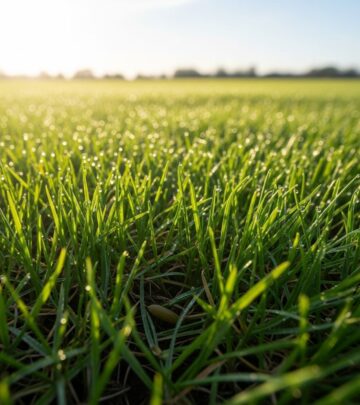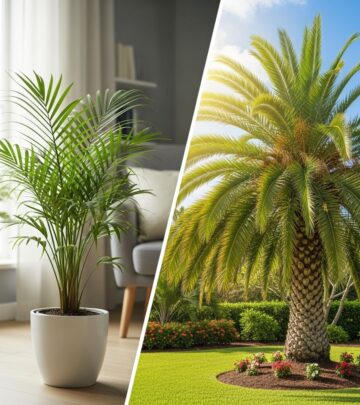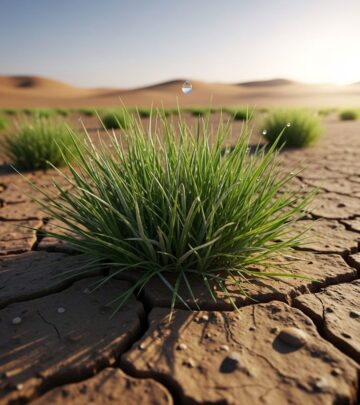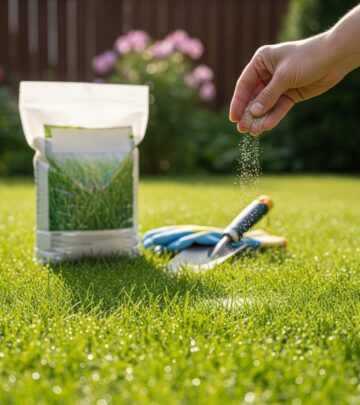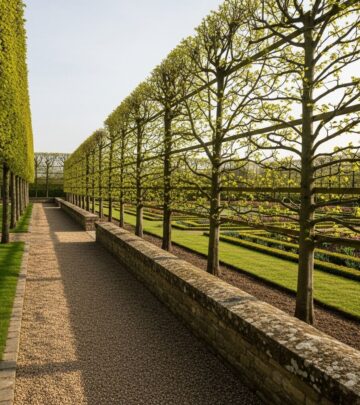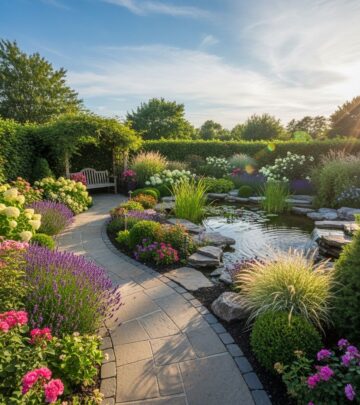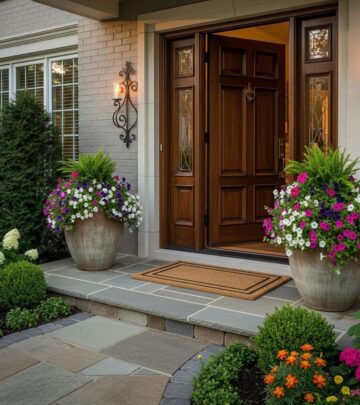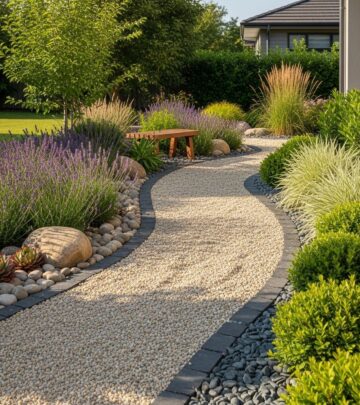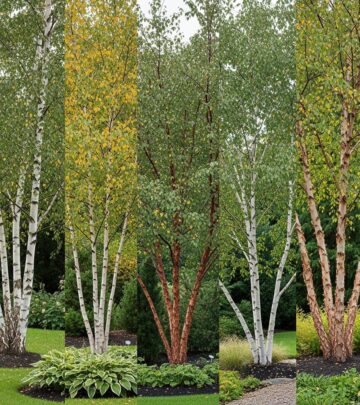Natural Swimming Pool: A Comprehensive Guide To Design & Care
Transform your backyard into an eco-friendly oasis with a chemical-free natural swimming pool
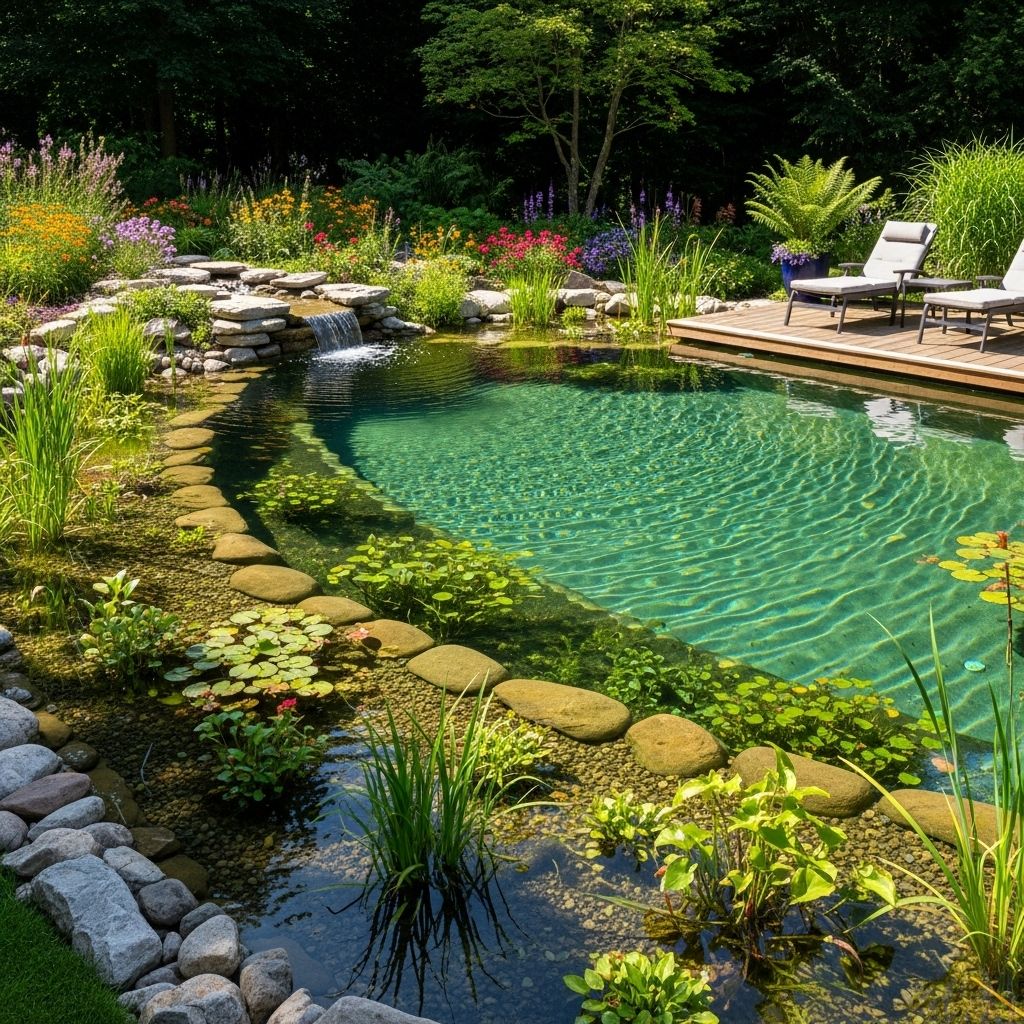
Image: HearthJunction Design Team
What Are Natural Swimming Pools?
Natural swimming pools, also known as swimming ponds or biological pools, represent a revolutionary approach to aquatic recreation that harmoniously blends with the surrounding landscape while eliminating the need for harsh chemicals. Unlike conventional chlorinated pools, these eco-friendly alternatives rely on carefully selected aquatic plants and beneficial microorganisms to filter and purify the water naturally. The result is a swimming experience that feels more like taking a dip in a pristine mountain lake than in a chemically treated pool.
The concept originated in Austria and Germany in the 1980s and has since gained popularity worldwide as homeowners seek sustainable alternatives to traditional pool systems. Today, natural swimming pools are not just practical recreational spaces but also stunning landscape features that enhance property aesthetics while supporting local biodiversity.
How Natural Swimming Pools Work
The brilliance of natural swimming pools lies in their elegant simplicity. These pools typically consist of two distinct zones that work together as an integrated ecosystem: a swimming zone and a regeneration zone (also called the plant or filtration zone). The swimming area is designed for human enjoyment, while the regeneration zone serves as the pool’s natural filtration system.
In the regeneration zone, carefully selected aquatic plants work tirelessly to filter the water. Their root systems absorb excess nutrients, particularly nitrogen and phosphorus, which would otherwise feed algae. This plant-based filtration is supplemented by beneficial bacteria that colonize the surfaces of gravel, rocks, and plant roots, breaking down organic matter and further purifying the water.
Water circulation between these zones is essential and can be achieved either passively through natural convection currents or actively using low-energy pumps. This circulation ensures that all pool water regularly passes through the natural filtration system, maintaining clarity and purity without chemical additives.
Design Considerations for Natural Swimming Pools
Designing a natural swimming pool requires thoughtful planning that considers both aesthetic and practical elements. The most successful designs integrate the pool seamlessly into the existing landscape, creating an impression that nature itself shaped the water feature.
Size and Layout
Natural swimming pools can be adapted to fit spaces of various sizes, though generally, they require more surface area than conventional pools. A typical natural pool needs approximately 50-100% of the swimming area dedicated to the regeneration zone. For example, a pool with a 500-square-foot swimming area might need an additional 250-500 square feet for the regeneration zone.
The shape of natural pools often follows organic contours rather than rigid geometric forms, though contemporary designs may incorporate more structured elements. The transition between swimming and regeneration zones can be designed as a gradual slope, creating a natural-looking shoreline, or as a more defined separation with walls or underwater barriers.
Site Selection
Proper placement ensures the pool enhances the beauty of the landscape and effectively maintains water quality. Strategic positioning can prevent common issues like excessive leaf fall or insufficient sunlight. When selecting a site for your natural swimming pool, consider these key factors:
- Sunlight exposure (6-8 hours daily is ideal for plant health)
- Proximity to deciduous trees that may drop leaves into the pool
- Natural drainage patterns of the land
- Views from the house and different areas of the garden
- Accessibility for construction equipment and future maintenance
Depth Considerations
The depth of your natural swimming pool impacts both usability and maintenance. Most natural pools feature varying depths, with deeper swimming areas (typically 5-8 feet) and shallower regeneration zones (usually 12-18 inches). The transition between these areas should be gradual, with a ratio of approximately 1 foot of vertical drop for every 3 horizontal feet, creating a gentle slope rather than abrupt depth changes.
Construction Methods for Natural Swimming Pools
Building a natural swimming pool can follow several construction approaches, each with distinct advantages and considerations. The three most common methods are liner-based, concrete, and hybrid systems.
Liner-Based Construction
Liner-based pools represent the most accessible DIY option and often the most economical approach. These pools use heavy-duty EPDM rubber or PVC liners to create a watertight basin. The construction process typically involves:
- Excavating the site according to the planned design
- Shaping the contours of both swimming and regeneration zones
- Adding a protective layer of sand or geotextile fabric
- Installing the liner and securing it around the perimeter
- Adding substrate layers for the regeneration zone
- Installing circulation systems and any additional filtration
While liner-based pools offer lower initial costs, the liners may require replacement every 10-20 years, depending on quality and installation.
Concrete Construction
Concrete natural pools offer exceptional durability and design flexibility but typically come with higher construction costs. These pools can be built using various concrete methods, including Rastra block construction:
To build a Rastra-block pool, excavate a hole just larger than the pool’s dimensions to allow for ample workspace. Most people choose to construct a pool 5 feet deep. For the bottom, either pour a concrete slab or cover the bottom with a rubber liner, then line with gravel. Install a drain and backflow preventer. Lay Rastra blocks along the edges of the slab, securing them with rebar. Fill the blocks’ cavities with concrete, which flows between blocks to tie the structure together. Use expanding foam sealant between courses and at joints, then waterproof by applying two coats of stucco. Backfill the space between the sides of the pool and the blocks with soil. Finish the perimeter with stones laid from the top of the blocks outward, or grow plants to the edge.
Hybrid Systems
Hybrid construction combines elements of both liner and concrete approaches. These systems might use concrete for the swimming zone and liners for the regeneration areas, or incorporate prefabricated components with custom-built elements. This approach allows for maximizing the benefits of different materials while potentially minimizing their disadvantages.
Filtration Systems for Natural Swimming Pools
While plants provide the primary filtration in natural swimming pools, most designs incorporate additional filtration components to ensure optimal water quality. These systems work in harmony with the biological processes and may include:
Biological Filters
Biological filters provide surfaces for beneficial bacteria to colonize, enhancing the pool’s natural purification capabilities. These filters typically consist of chambers filled with substrates like gravel, crushed lava rock, or specialized bio-media. Water passes through these materials, where bacteria break down organic compounds and convert ammonia to less harmful substances.
Skimmers and Mechanical Filtration
Surface skimmers collect floating debris before it can sink and decompose in the pool. Mechanical filters trap particles suspended in the water, preventing them from clouding the swimming area. These components help maintain water clarity and reduce the workload on the biological filtering systems.
Circulation Systems
Proper water circulation is essential for natural pool function. Energy-efficient pumps move water between swimming and regeneration zones, ensuring all water receives regular filtration. Strategically placed inlets and outlets create circulation patterns that prevent stagnant areas. Some designs incorporate waterfall features that not only add aesthetic appeal but also enhance oxygenation and circulation.
Once the natural pool has been built, it is essential to maintain the filtering and water treatment system correctly. To keep the natural pool clean and healthy, properly manage the filtering system, maintain the correct balance of nutrients in the water, and prevent organic materials from falling into it.
Selecting Plants for Your Natural Swimming Pool
The plants in a natural swimming pool aren’t merely decorative—they’re the workhorses of your filtration system. Different plants perform specific roles in maintaining water quality:
- Submerged oxygenators grow completely underwater and release oxygen while absorbing nutrients directly from the water
- Floating plants shade the water surface, reducing algae growth by limiting light penetration
- Emergent plants have roots underwater but foliage above the surface, creating habitat diversity
- Marginal plants grow along the edges in shallow water, providing transition between aquatic and terrestrial zones
When selecting plants, consider your local climate and choose native species whenever possible. Native plants are adapted to local conditions, require less maintenance, and support local wildlife. Some excellent choices for natural pools include water lilies, rushes, sedges, iris, and various aquatic grasses.
Once your pool is constructed, prepare the plant zone with 3 to 6 inches of soil. Choose soil carefully as it can carry contaminants. Avoid using soil from areas with animal excrement, like dog runs or grazing areas. Select soil free of organic matter that would decompose underwater. You can have soil samples tested for potentially pathogenic bacteria by contacting your state’s health department. After placing soil, gravel, and hardware, fill the pool, disturbing the soil as little as possible. Let the pool rest for a week before installing plants, using this time to test that all hardware works properly.
Maintenance and Seasonal Care
Natural swimming pools require different maintenance routines than conventional pools but generally demand less chemical intervention and energy consumption. Regular maintenance tasks include:
- Removing fallen leaves and debris from the water surface
- Trimming and dividing aquatic plants as needed
- Cleaning skimmers and mechanical filters
- Managing water levels, especially after heavy rain or during drought
- Monitoring plant health and replacing any struggling species
Seasonal care varies by climate. In colder regions, natural pools can either be winterized or, in some cases, used for ice skating during freezing weather. The regeneration zone typically remains active even in cooler temperatures, though its efficiency decreases during winter months.
In spring, pools may require additional attention to address any algae blooms that occur as temperatures rise and before plants reach their full filtration capacity. Summer maintenance focuses on managing plant growth and ensuring proper circulation, while fall care emphasizes removing fallen leaves before they decompose in the water.
Cost Considerations and ROI
The initial investment for a natural swimming pool typically exceeds that of a conventional pool of comparable size. However, this higher upfront cost is often offset by lower long-term operating expenses. Natural pools eliminate the need for chemical purchases, reduce energy consumption for filtration and heating, and often require less frequent structural maintenance.
Installation costs vary widely based on design complexity, size, regional labor costs, and construction methods. As a general guideline, professional installation of natural swimming pools ranges from $50-$100 per square foot, including both swimming and regeneration zones. DIY approaches can significantly reduce these costs for those with suitable skills and equipment.
Beyond financial considerations, natural pools offer substantial returns in terms of environmental benefits, aesthetic value, and the creation of wildlife habitat. Many homeowners report that their natural pools become focal points for family activities and social gatherings, enhancing property enjoyment and potentially boosting real estate value.
Frequently Asked Questions
Q: Do natural swimming pools attract mosquitoes?
A: Properly designed natural pools discourage mosquito breeding through moving water and the presence of natural predators like dragonflies and beneficial surface-dwelling insects that feed on mosquito larvae.
Q: How clear is the water in a natural swimming pool?
A: Well-maintained natural pools offer excellent water clarity, though they typically have a more natural appearance than chemically treated pools. The water often has slight amber tints from natural tannins rather than the artificial blue of chlorinated pools.
Q: Can I convert my existing conventional pool to a natural pool?
A: Many conventional pools can be converted to natural systems by adding a regeneration zone, appropriate filtration, and eliminating chemical treatments. The specific approach depends on the existing pool’s construction and condition.
Q: Are natural swimming pools legal everywhere?
A: Regulations vary by location. Some areas have specific codes addressing natural pools, while others evaluate them under standard swimming pool regulations. Always check local building and health department requirements before beginning construction.
Q: How long does it take for a new natural pool to establish ecological balance?
A: Most natural pools require 1-3 seasons to develop fully functional ecological balance. During this establishment period, additional maintenance and patience may be required as the biological systems mature.
References
- https://www.motherearthnews.com/diy/natural-swimming-pool-zmaz02aszgoe/
- https://www.singulargreen.com/en/how-to-make-natural-pools/
- http://www.organicpools.co.uk/DIY%20Natural%20Pool%20Manual%20free%20version.pdf
- https://www.youtube.com/watch?v=7xbZxiz43mk
- https://www.heartwoodsaunas.com/a-guide-to-natural-swimming-pools
Read full bio of Anjali Sayee

